
Do you struggle to identify the interval between two notes?
A trick I use is to think of a melodies than contain the interval, and are easy to remember.
Below are a few suggestions for the main major, minor and perfect intervals.
Minor 2nd
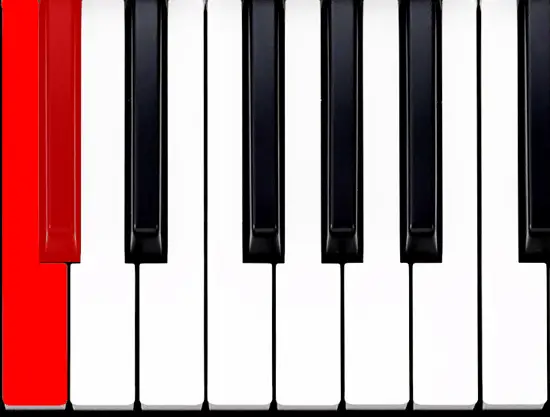
The smallest distance between two notes on the standard Western tuned keyboard/piano is the minor 2nd, known also as a semitone.
Short symbol: m2. May also be referred to as a half tone, half step, or augmented unison.
Ascending
Examples
- The two prominent notes in the theme to the movie Jaws.
Descending
Listen to the intervals played both ascending and descending, plus together as a chord, across several octaves.
Major 2nd
Short symbol: M2. May also be referred to as a tone, whole tone, whole step or diminished third.
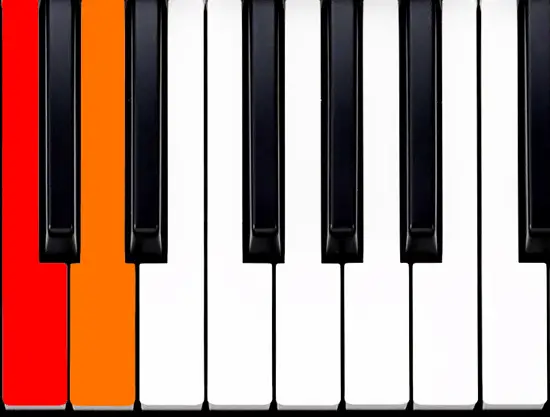
Ascending
Examples
- Doe A Deer (Sound of Music): First two notes of the chorus
- EastEnders (UK Soap Opera): Any two consecutive notes from the first three
- Frere Jacques: First two notes or second and third notes
- Happy Birthday: Second and third notes
Descending
Examples
- Blow the Wind Southerly: First two notes
- Deck the Halls: First two notes (learn to play Deck the Halls)
- Mary Had A Little Lamb: First two notes
- The First Noel: First two notes
- Three Blind Mice: First two notes or second and third notes
- Whistle While You Work: First two notes
- Yesterday (The Beatles): First two notes
Listen to the intervals played both ascending and descending, plus together as a chord, across several octaves.
Minor 3rd
Short symbol: m3. May also be referred to as an augmented second.
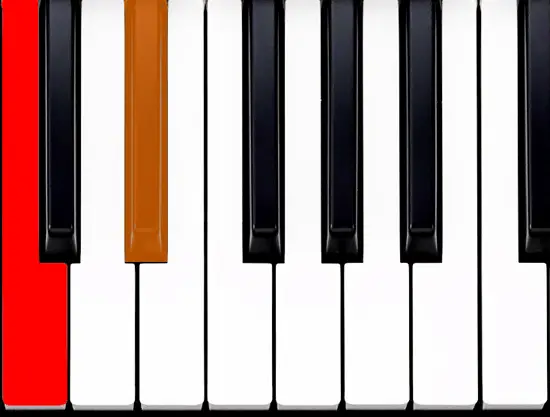
Ascending
Examples
- “Shape of You” by Ed Sheeran: First two notes of main intro/riff
- “Moves Like Jagger” by Maroon 5: First two notes of main intro/riff
- “A Time for Us” Romeo & Juliet (main theme): First two notes
- Beverley Hills Cop: First two notes
- Greensleeves: First two notes
- Lullaby (Brahms): Second and third notes
- The Impossible Dream: “To Dream” notes
Descending
Examples
- Beverley Hills Cop: Second and third notes
- Frosty the Snowman: First two notes (learn to play Frosty the Snowman)
- Hey Jude (The Beatles): First two notes
- Jesus Loves Me: First two notes
- The Star-Spangled Banner: First two notes (learn to play Star-Spangled Banner)
- This Old Man: First two notes
Listen to the intervals played both ascending and descending, plus together as a chord, across several octaves.
Major 3rd
Short symbol: M3. May also be referred to as a diminshed fourth.
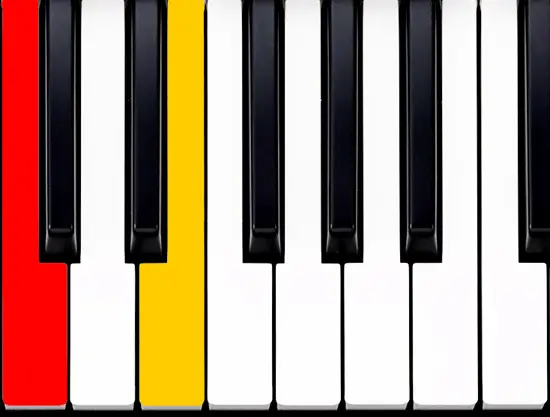
Ascending
Examples
- Michael Row the Boat Ashore: First and second notes
- While Shepherd’s Watched Their Flocks By Night: First two notes (Learn to play While Shepherd’s Watched)
Descending
Examples
- Beethoven’s Fifth: Third and fourth notes of main melody
- Summertime: First two notes
- Swing Low Sweet Chariot: First two notes
Listen to the intervals played both ascending and descending, plus together as a chord, across several octaves.
Perfect 4th
Short symbol: P4. May also be referred to as an augmented third.
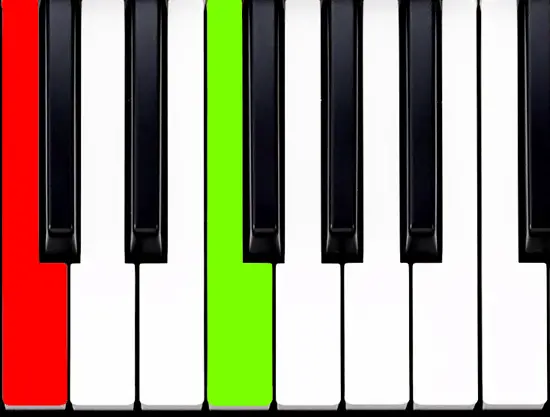
Ascending
Examples
- Auld Lang Syne: First two notes (learn to play Auld Lang Syne)
- Amazing Grace: First two notes (learn to play Amazing Grace)
- Dallas: First two notes
- Hark the Herald Angels Sing: First two notes (learn to play Hark the Herald Angels Sing)
- Here Comes the Bride: First two notes
- Love Me Tender (Elvis Presley): First two notes
- O Christmas Tree (O Tannenbaum): First two notes (learn to play O Christmas Tree)
- Some Day My Prince Will Come: First two notes of chorus
- We Wish You A Merry Christmas: First two notes (learn to play We Wish You A Merry Christmas)
- “We’re Walking in the Air” (theme from The Snowman): First two notes
Descending
Examples
- “Happy” by Pharrell: Interval to first drop note in the verse
- “Chasing Cars” by Snow Patrol: First two verse notes
- Born Free: First two notes
- Come on Eileen: (Dexy’s Midnight Runners) First two notes of chorus (“Come On”)
- O Come All Ye Faithful: Second and third notes (learn to play O Come All Ye Faithful)
Listen to the intervals played both ascending and descending, plus together as a chord, across several octaves.
Tritone
May also be referred to as a diminished fifth or an augmented fourth.

Ascending
Descending
Listen to the intervals played both ascending and descending, plus together as a chord, across several octaves.
Perfect 5th
Short symbol: P5. May also be referred to as a diminished sixth.
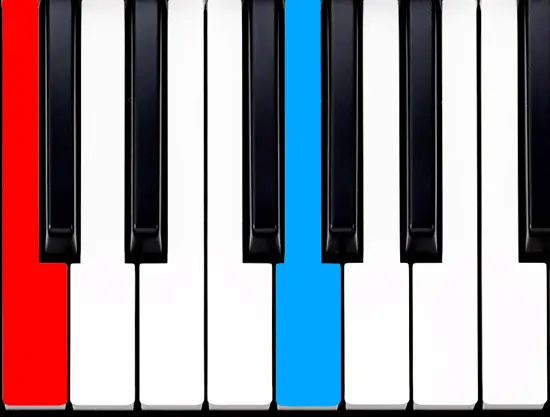
Ascending
Examples
- 2001 A Space Odyssey (Theme): First two notes of main melody
- Lavender’s Blue: First two notes
- O Lord and Father of Mankind (Hymn): First two notes
- Star Wars: First two notes
- Twinkle Twinkle Little Star: Second and third notes (Get the music for Twinkle Twinkle Little Star)
Descending
Examples
- The Flintstones: First two notes
- The Star-Spangled Banner: The first and third notes form a perfect fifth descending. (learn to play Star-Spangled Banner)
Listen to the intervals played both ascending and descending, plus together as a chord, across several octaves.
Minor 6th
Short symbol: m6. May also be referred to as an augmented fifth.
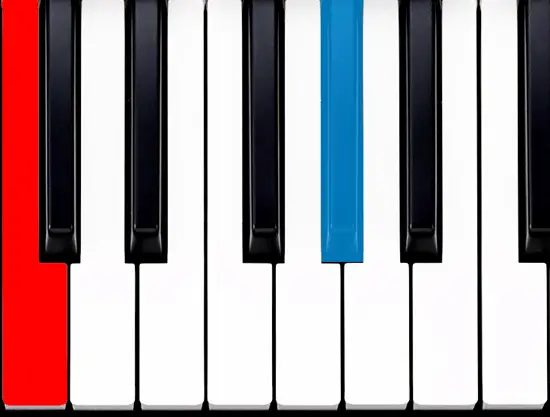
Ascending
Examples
- The Entertainer: Third and fourth notes
- Theme from ‘Love Story’: Third and fourth notes (first two notes are the same interval with high note first)
Descending
Examples
- “Call Me Maybe” by Carly Rae Jepsen: First two notes of chorus
- Theme from ‘Love Story’: First two notes
Listen to the intervals played both ascending and descending, plus together as a chord, across several octaves.
Major 6th
Short symbol: M6. May also be referred to as a diminished seventh.

Ascending
Examples
- Angels (Robbie Williams): First two notes of verse
- It Came Upon the Midnight Clear (Carol): First two notes (
- Jingle Bells: First two notes of line “Dashing Through the Snow” (learn to play Jingle Bells)
- My Bonnie Lies Over the Ocean: First two notes
Descending
Examples
- Music of the Night (from Phantom of the Opera) – first two notes of verse
Listen to the intervals played both ascending and descending, plus together as a chord, across several octaves.
Minor 7th
Short symbol: m7. May also be referred to as an augmented sixth.
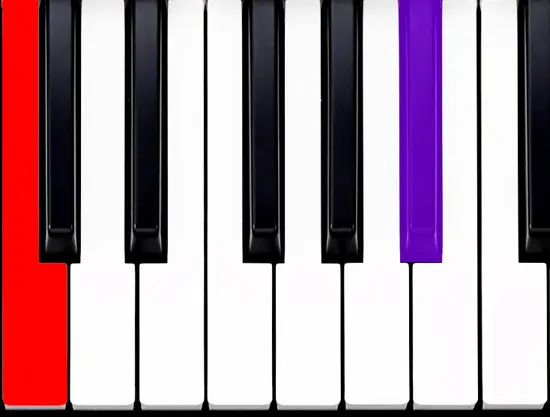
Ascending
Descending
Listen to the intervals played both ascending and descending, plus together as a chord, across several octaves.
Major 7th
Short symbol: M7. May also be referred to as a diminished octave.

Ascending
Examples
- On the Street Where You Live: the notes for ‘Once’ and ‘Am’ in ‘All at once am I, several storeys high’
- There’s a Place For Us (West Side Story): First two notes
Descending
Listen to the intervals played both ascending and descending, plus together as a chord, across several octaves.
Octave
Short symbol: P8. May also be referred to as a perfect octave or augmented seventh.
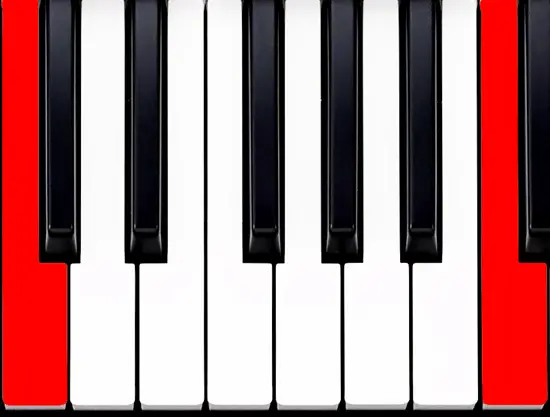
Ascending
Examples
- Let It Snow: Second and third notes (learn to play Let It Snow)
- Somewhere Over the Rainbow: First two notes
Descending
Examples
- There’s No Business Like Show Business: Second and third notes
Listen to the intervals played both ascending and descending, plus together as a chord, across several octaves.
Hat tips to ThinkQuest, “Songwriting and the Creative Process”, VCU and commenters below for additional song ideas.

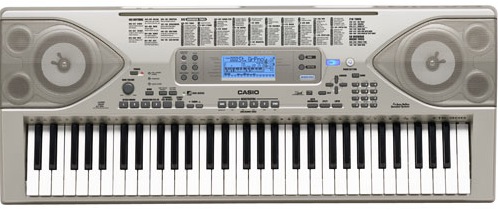

19 thoughts on “Songs to help you learn note intervals”
We have made a comprehensive chart of songs, organized by their starting interval. Each song includes a link to a YouTube video with the song. Check it out here:
http://www.earmaster.com/intervalsongs
Best regards,
Hans Jakobsen
EarMaster
Fur Elise has an octave in it.
Does anyone else find minor sixth’s remind them of “I wear my Sunglasses at night”?
“There’s a place for us” actually starts with a minor 7th
For both descending *and* ascending 6ths, there’s no better piece than this Brahms symph 4, it repeats over and over in a figure.
Thanks for the info, this stuff helps adults learn. Most of the other websites I’ve seen are for elitist jerks who can more or less do it anyway and prolly had lessons from 5 years old or something.
I hope you like this song, I think its really good 🙂
http://www.youtube.com/watch?v=jnzPMJ7zbfk&feature=related
for aug4 dim5 listen to the simpsons theme
hey
no offense but beethovens 5th is like major 3rd decending (1st and second note) and then minor third decending (3rd and 4th), got a little confused here 😉
cheers
oh, bullshit, now i see what you meant =DD